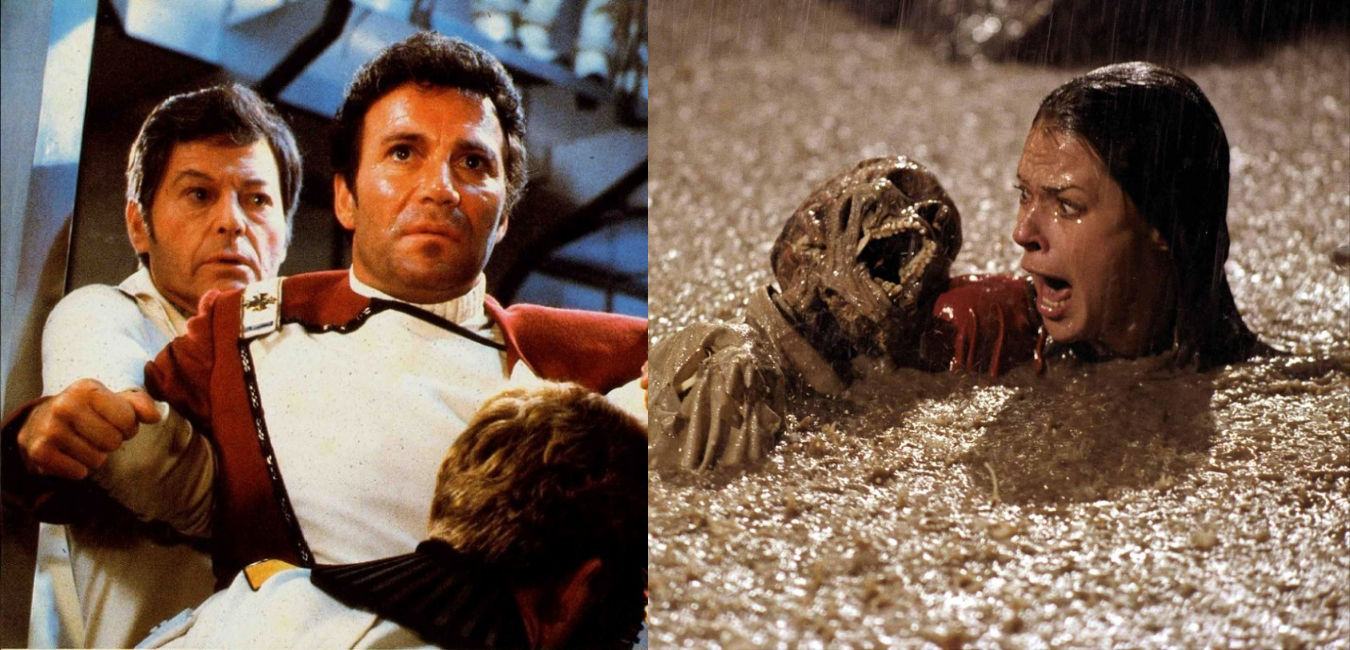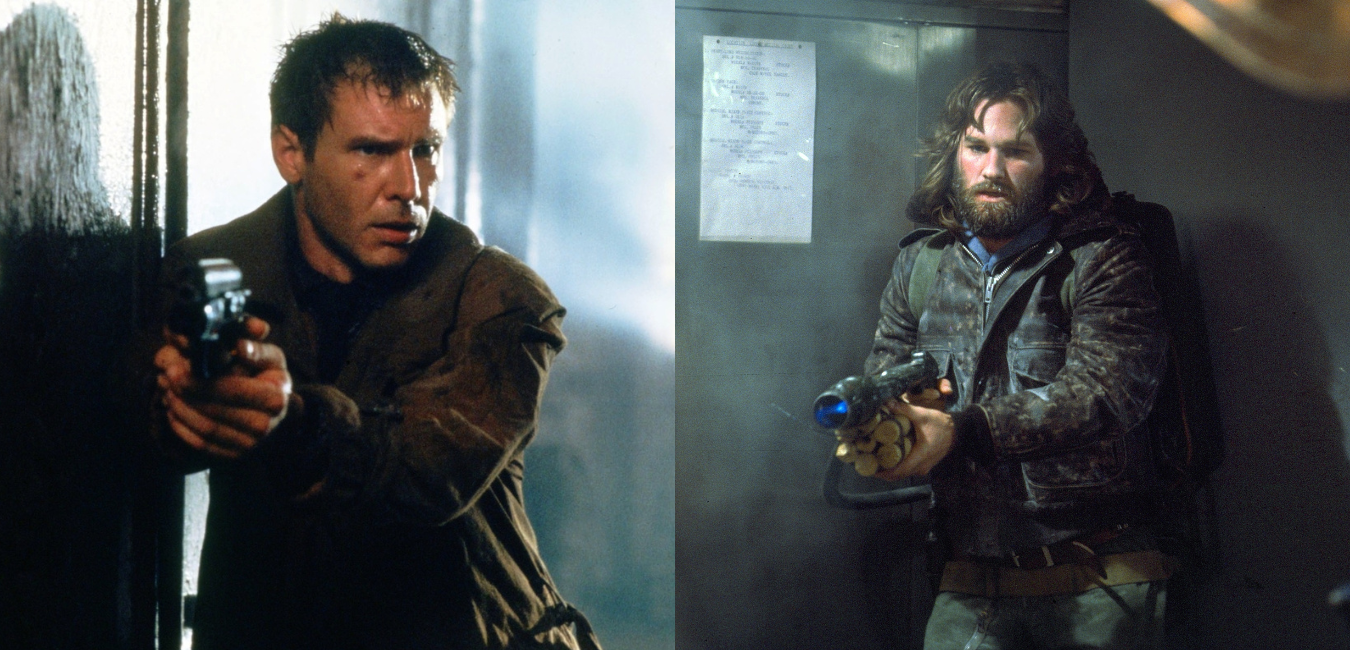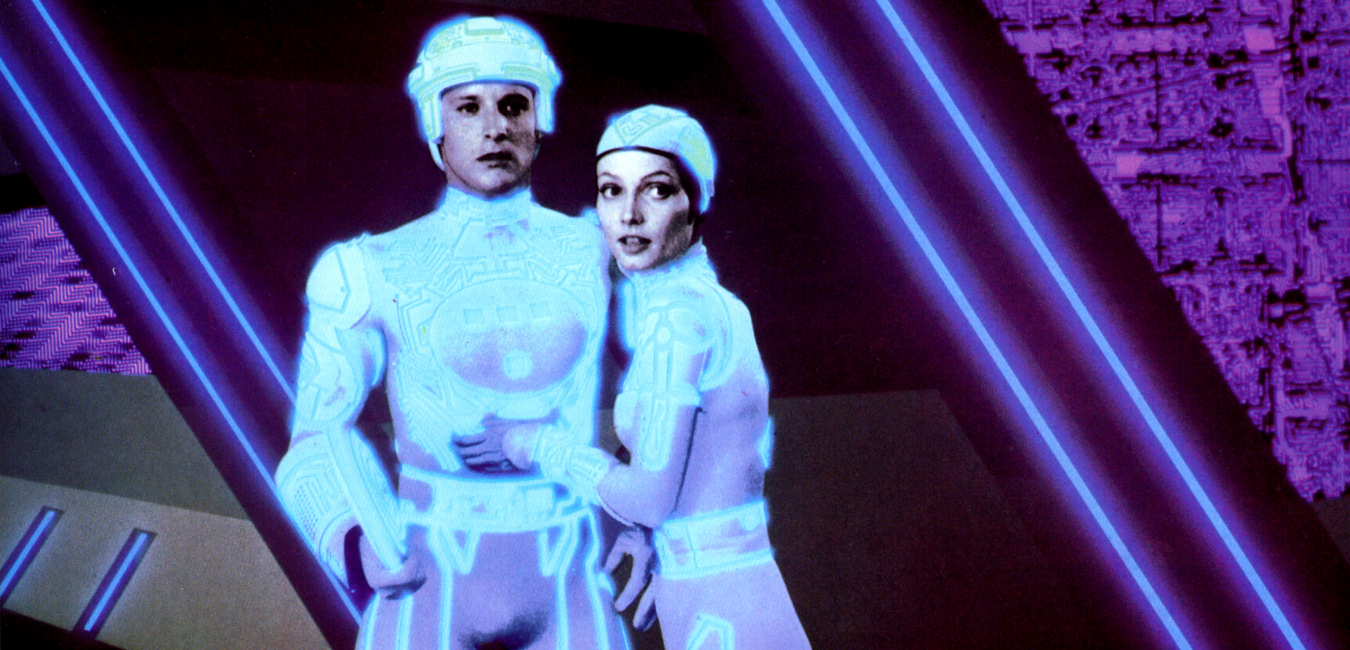Mad Max sequel 'The Road Warrior' shows the possible futures of society and filmmaking

Mel Gibson protects his own in a desolate world in “The Road Warrior.” (Warner Bros./MovieStillsDB.com)
"The Road Warrior"
Released May 21, 1982
Directed by George Miller
Where to Watch
Making the first sequel to a film that equals the original movie is hard enough, but surpassing it is rarefied air. And yet Australian director George Miller accomplishes this remarkable filmmaking feat with "Mad Max 2: The Road Warrior," a movie that would discover what was possible to create on a low budget but would become one of the most influential movies of its kind.
When the original "Mad Max" made its United States debut in the spring of 1980, it didn't make a splash here with ticket sales, which is the main reason it's called "The Road Warrior" here but known elsewhere under the original name, "Mad Max 2")The original did capture some people's attention, however. Its style and energy about it separated it from its low-budget sci-fi peers.
Taking place in the near future, "Mad Max" introduced Max Rockatansky (Mel Gibson in one of his earliest film roles), a highway enforcement officer and family man. While on the job, Max pursues a violent gang leader who's killed in the pursuit. The other gang members declare vengeance against Max, and they don't mind if his family gets in the way. The gang eventually tracks the Rockatansky family to a remote farm, lures Max away with a distraction, and kills his wife and son. The murders unleash the "Mad" in Max as he chases down each gang member. After completing his revenge, Max drives off into the unknown, entering a future with limited resources, violent consequences, and no personal attachments as the film ends.
Max loses his humanity by the end of the first movie. In "The Road Warrior," society catches up to Max. This wasteland world has evolved into a dystopian future. In this place, the monstrous gangs we saw previously have ascended to authoritative rule without any force to stop them. Resources like oil are highly scarce and prone to hoarding. Max continues to haunt the highways, scavenging for gas whenever he can, when he encounters another gang, led by the masked Lord Humungus (Kjell Nilsson) and his nasty, mohawked enforcer Wez (Vernon Wells). Humungous targets a small, isolated community with oil storage, and gradually Max is drawn into the conflict like a futuristic version of Akira Kurosawa's "Yojimbo."
Using the oil as the film's MacGuffin established how forward thinking "The Road Warrior" would be for both Max's world and ours. The energy crisis of 1979 that forced motorists to endure long lines at gas stations occurred shortly before production on "The Road Warrior" began, creating conflict audiences could relate to as a possible future for them. The violence created by the scarcity of resources (including oil) would continue throughout the series. Every military conflict the United States has engaged in during the 21st century is all with oil-producing countries, a reality that's obscured by the stated reasons for war. It's a thematic idea that contributes to the relevance the Mad Max movies have for audiences today.
Beyond its themes, "The Road Warrior" stands out because of its dynamic visuals and sequences. We quickly see how stark, desolate, and intense Max's world has become since we last saw him. While previously, we were able to observe familiar elements of our society - a station, garage, general store, and homes - have all vanished in this landscape. Instead, the community has built a somewhat protective space for themselves, stitched together by whatever materials they could scavenge.
Most vehicles have also upgraded and morphed into machines that can transport, protect, and intimidate. Max's trademark black V8 Interceptor has been redesigned to hold additional gas tanks and a unique hidden kill switch to make sure only he can operate it. A new ally played by Bruce Spence pilots a gyrocopter. The road raiders chase down their prey in tricked-out vehicles designed for speed and damage. It all leads to a spectacular climactic road chase that remains thrilling because of the action and editing, as all of the stunts are real in a time before CGI changed the game.
Finally, the leatherwear Max sports in the first movie has expanded to most of the other characters of "The Road Warrior." As designed by Norma Moriceau, the ruthless gang leans heavily into black dominatrix sadomasochistic designs that were becoming more publicly visible in the early 80s. The community characters are dressed in white robes and cloth, which clearly contrasts with the raiders and is just one more way the wastelands of the Mad Max series give us a fully-realized version of a dystopian future. Combined with "Blade Runner" (which debuts a month later), the atmosphere of "The Road Warrior" would influence grim depictions of the future in popular culture, including movies, video games, music, and even pro wrestling with characters like the Road Warriors and Malakai Black.
This vision of the future amplifies the archetypal story at its center – a cynical loner who feels compelled to help innocents defend themselves from violence. The tale is familiar with iconic movies like "Seven Samurai" and "Star Wars" executing variations of it, and many times drawn from the same source: Joseph Campbell's 1949 book, "The Hero of a Thousand Faces," which examines the heroic archetype in storytelling. Miller was inspired by it as well as he strove to make a better movie than "Mad Max." It was his directorial debut after a career as a medical doctor. While he meticulously pre-planned the production, he grew frustrated by the unexpected issues that arose during filming that he had to solve.
"'Road Warrior: Mad Max 2' was an opportunity to put all those things we learned from the first 'Mad Max,' Miller said in the 2016 retrospective feature, "Road War." "Not only just the physical filmmaking, not only the logistics, but making it much more of a mythological story."
"The Road Warrior" was overwhelmingly popular with critics and a favorite of audiences when released in the States in 1982. While it opened with a $2.5 million gross to place fourth for the weekend, it maintained a good retention rate week after week while facing intense competition. "The Road Warrior" finished with $23.6 domestic sales against its estimated $3 million budget, far outpacing the original "Mad Max" film's United States gross of $8.7 million.
"Never has a film's vision of the post-nuclear-holocaust world seemed quite as desolate and as brutal, or as action-packed and sometimes as funny, as in George Miller's apocalyptic 'The Road Warrior,' an extravagant film fantasy that looks like a sadomasochistic comic book come to life," wrote Vincent Canby for The New York Times. "(It's) not exactly fine art, but in its stripped-down, cannily cinematic way, it's one of the most imaginative Australian films yet released in this country."
That's high praise, but as our understanding and appreciation for genre entertainment have grown over the decades since, it's clear that this Mad Max sequel is indeed fine art. Like various painters can compose a portrait of a landscape in so many unique ways of mixed quality, George Miller's cinematic vision of the future proved to be remarkably influential but rarely surpassed.
If there is one movie that tops "The Road Warrior's" ambition and achievement, we must turn back to Miller. After 30 years, the director returned to the wastelands with 2015's "Mad Max: Fury Road," a high-octane sequel that more or less extends "The Road Warrior's" climactic chase for the entire movie while never losing sight of the story and character development. Tom Hardy steps into Gibson's role for the first time, with Charlize Theron playing the new character Imperator Furiousa who leads a dangerous escape for the imprisoned women of the Citadel.
Once again, Miller took the lessons from his experience making "The Road Warrior" (and 1985's "Mad Max: Beyond Thunderdome") and strove to make it better. "Fury Road" is widely considered one of the best films of the 2010s, and now Miller is hard at work preparing a prequel, "Furiosa." Another Mad Max movie is also being discussed. His next film, "3,000 Years of Longing," debuts on Aug. 31, 2022. If the trailer is any indication, Miller has yet another wildly imaginative and captivating piece of cinema ready to add to his impressive filmography.
It's incredibly unusual to see a decade-long movie franchise progressively improve with nearly every installment. Still, Miller's Mad Max franchise continued to raise the bar purely through filmmaking multiple times with "The Road Warrior" and "Mad Max: Fury Road." Anyone studying the art of film would do well to examine these two films to discover what's possible.
At the Box Office: Last week's box office champ "Conan the Barbarian" hung onto the crown for a second straight week with a $6.9 million haul to bring its domestic total to $20.3 million. Between "Conan," "The Road Warrior," and next week's "Rocky III," we're looking at three lead actors in three weeks establishing themselves as the top action stars of the decade.
"Dead Men Don't Wear Plaid," the Carl Reiner film starring Steve Martin, debuted this week with a $4.3 million weekend total, good for second place. Reiner and Martin first worked together in film for 1979's "The Jerk," a massive box office comedy hit with $73.6 million in ticket sales. "Dead Man" didn't perform close to that amount, earning only $18.2 million during its theatrical run. Despite the underperformance, Reiner and Martin would continue working together for a few more films in the early 80s.
In third place was the hit of the year at that point, "Porky's." The teenage sex comedy brought in another $2.9 million, nearly identical to last week's gross, to raise its domestic total to almost $80 million in 10 weeks.
Behind "The Road Warrior's" fourth-place finish of $2.5 million was "The Sword and the Sorcerer," coming in fifth place with $2.1 million.
A few other debuts this weekend in 1982 finished outside the top five. "Fighting Back," a vigilante drama in the vein of the Death Wish movies, landed in sixth place with $1.6 million. After the second week, it dropped out of theaters, finishing with $3.3 million. Finally, the family musical "Annie," based on the iconic comic strip, premiered in 14 theaters. The weekend gross of $510,632 set "Annie" up for a 13th-place debut, but it also boasted the weekend's highest per-screen average by a significant margin. "Annie" will be featured in this column a bit more when it receives a wide release in about a month.
Next Week: "Rocky III"
Mark is a longtime communications media and marketing professional, and pop culture obsessive.




